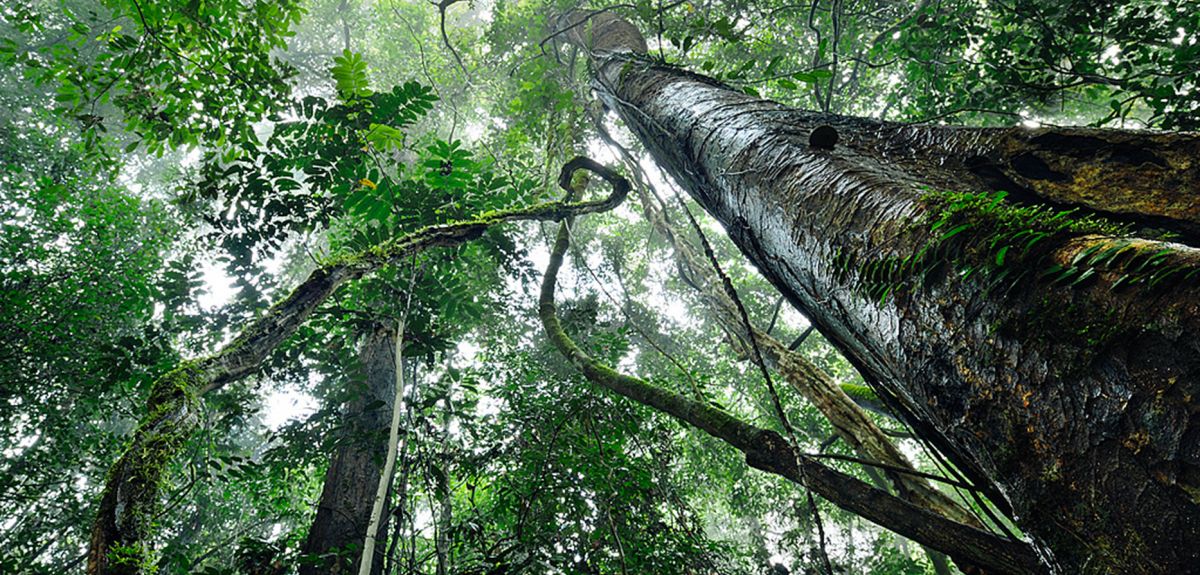
Drought survival secrets of tropical forests
Experiments on tree seedlings have given new clues to why some tropical species are better at surviving drought than others. The results could help to restore forests devastated by logging and increase their resilience to climate change.
At the site of the Sabah Biodiversity Experiment in Malaysian Borneo a team led by Oxford University scientist Professor Andy Hector exposed seedlings of ten tropical tree species to a simulated drought to study how levels of compounds called non-structural carbohydrates (NSCs) affected their survival. They found that those species with higher-levels of NSCs survived from 5-17 days longer in drought conditions. The experiments also confirmed the role of NSCs by showing that seedlings of all species died more quickly from drought when they had their NSC levels artificially lowered.
A report of the research is published in Nature Climate Change.
The function of non-structural carbohydrates (water soluble sugars and starch) in plants, and exactly how they make plants more resilient to drought, is poorly understood. However the new research provides the first clear experimental evidence of a link between higher levels of NSCs before drought and increased drought survival.
'The diversity of tropical forests is staggering but explaining why this diversity arose and how it is maintained is a puzzle. We've shown that different species appear to have evolved different levels of drought-busting compounds which probably play an important role in defining their different ecological niches and which means diverse mixtures of species may be an important insurance against the increasing drought predicted by climate change models,' said Professor Andy Hector of Oxford University's Department of Plant Sciences, senior author of the study.
To test whether NSCs played a role in helping plants to resist drought, as had long been suspected, the researchers took advantage of Borneo's season-less tropical climate: to manipulate NSC levels they raised some seedlings first under dark conditions and then swapped them to lighter growth conditions while doing the opposite with another set. The two groups of seedlings were similar in every way except those that were raised under dark conditions last had run down their stores of NSCs whilst those that were finished off under lighter conditions had replenished their stores.
Seedlings of ten species, all with normal or experimentally-reduced levels of NSCs, were then hit with a simulated drought until all the seedlings died. Those with experimentally-reduced levels of NSCs died more quickly. The same relationship was confirmed when comparing across species – those with higher levels of NSCs survived longer under drought. 'We now have a characteristic trait – levels of these previously unseen non-structural carbohydrates – that seems to allow us to predict which species and individuals are more vulnerable to drought,' said lead author Michael O’Brien who conducted the work as part of his PhD research at the University of Zurich.
'These results also contribute to the hotly-debated topic of what exactly kills plants in a drought: whether they actually die of thirst or whether they starve to death,' said Sebastian Leuzinger, now at the Auckland University of Technology, New Zealand. To photosynthesize plants must take in carbon dioxide through pores in their leaves called stomata but in doing so they also lose moisture. Drought can cause embolisms (bubbles) to form in the xylem, the pipes inside plants that carry water from the roots to the leaves, breaking the flow and leading to death by desiccation. However, to avoid this, plants can close their stomata to resist drought. But with their stomata closed plants cannot take in the CO2 they need for photosynthesis and so they slowly starve to death. The team's experiments show that the plants with reduced non-structural carbohydrates suffered hydraulic failure but were not out of food reserves: so the results strongly support the view that drought causes death by desiccation rather than starvation, at least for tropical trees.
'Because we can now predict the drought resistance of species based on the levels of these drought-busting compounds we have the potential to restore logged forests in the region with designer species mixtures selected to ensure drought resilience. The current system of replanting logged areas as monocultures of single species risks leaving areas vulnerable to a complete wipe out if severe droughts hit as predicted by climate models for many of the forests in South East Asia,' said Professor Hector. 'The next stage is to see how well our experimental results do in predicting patterns in the forests under natural conditions.'
The research is part of the Sabah Biodiversity Experiment, one of the world's largest ecological experiments that studies how the diversity of trees in tropical forests affects the functioning and stability of these threatened ecosystems and how these forests can be protected and restored. The project comprises 500 hectare of previously logged tropical forest that have been left to regenerate naturally or replanted using either monocultures (the usual practice) or higher-diversity species mixtures. The researchers worked out of the Danum Valley Field Centre in the Malaysian state of Sabah on the island of Borneo.
A report of the research, entitled ‘Drought survival of tropical tree seedlings enhanced by non-structural carbohydrate levels', is published in Nature Climate Change.
 Expert Comment: What should we do about chatbots?
Expert Comment: What should we do about chatbots?
 Rapid, low-cost tests can help prevent child deaths from contaminated medicinal syrups
Rapid, low-cost tests can help prevent child deaths from contaminated medicinal syrups